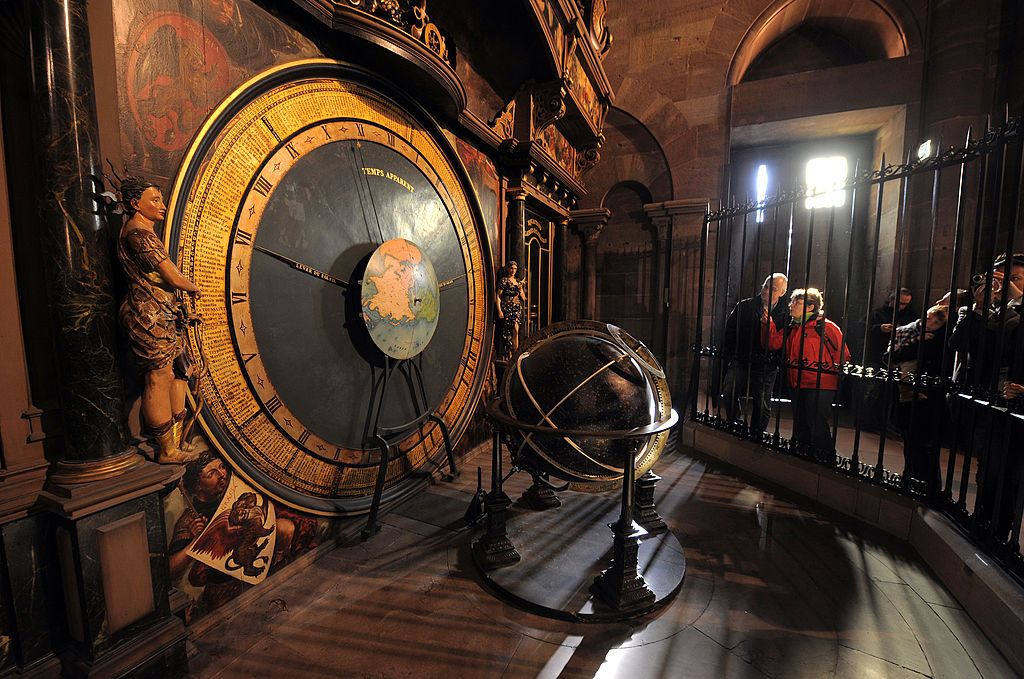Here’s a concept I’ve heard of, fascinating and beneficial in ways, problematic in others.

Wikipedia: Holocene Calendar
The Holocene calendar, also known as the Holocene Era or Human Era (HE), is a year numbering system that adds exactly 10,000 years to the currently dominant (AD/BC or CE/BCE) numbering scheme, placing its first year near the beginning of the Holocene geological epoch and the Neolithic Revolution, when humans shifted from a hunter-gatherer lifestyle to agriculture and fixed settlements. The current year by the Gregorian calendar, AD 2023, is 12023 HE in the Holocene calendar. The HE scheme was first proposed by Cesare Emiliani in 1993 (11993 HE),[1] though similar proposals to start a new calendar at the same date had been put forward decades earlier.[2][3]
I can’t seem to find a decent illustration or diagram of it. The photo above is a pretty picture from an article about the idea of switching to this calendar, from back in 2016. (And it looks like an image from the game Myst or any of its sequels.)
Popular Mechanics, 7 Dec 2016: The Case for Changing Our Calendars to 12,017 Next Year, subtitled “The vast majority of human history occurred more than 2016 years ago.”
The subtitle there is apt. The current calendrical system used around the world is one that became a global standard through accidents of history (and Western privilege). I could have mentioned this yesterday, in response to the Matthew O. Jackson question about a one world culture — in fact, I’ll add that into my response to that.
The idea of this calendar is in reaction to the current worldwide, in terms of a base date for how we measure years, that has become a standardized around the world. It’s problems include the implication that the world, or at least everything important about it, is only a couple thousand years old; and it’s difficult to calculate intervals between B.C. (or B.C.E.) and A.D. given the lack of a year 0. Adding 10,000 results in a broader scope for the expanse of human history, and tying the base of the chronology to a fundamental shift in human history — the end of the last ice age, and the human discovery of agriculture and the implementation of settlements — that affected the entire race, rather than events that affected only one part of the world, two millennia ago.
Still, the fact that this calendar merely adds 10,000 years to the current common calendar does not relieve it from its provincial origin.
\\
The Hebrew calendar is the another calendar used across the world, if only by a minority, the Jews. Corresponding roughly to Biblical chronology, it presumes to count the years of the age of the *world*, not just human history, as if the world has only lasted about as long as Hebrew history records. This is a typical self-absorption, to presume that the world has existed only as long as humans can remember things that happened.
\\
Numerous science fiction stories, especially those set in the far future, assume that our current calendar will be overridden by other systems. The most popular SF example might be Star Trek’s stardate, which was never precisely defined, or was consistent from one episode to the next, especially in the very earliest episodes. The original idea seemed to be that an advance of one stardate, e.g. 1314.1, to the next, 1315.1, measured one full day. That would place the stardates of the earliest episodes, something like 1312.2, as being only about four years since the beginning of… what? The beginning of the mission of the Enterprise? This was never made clear.





